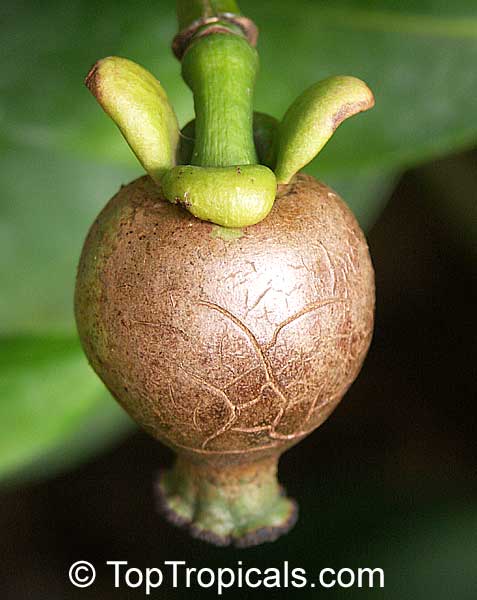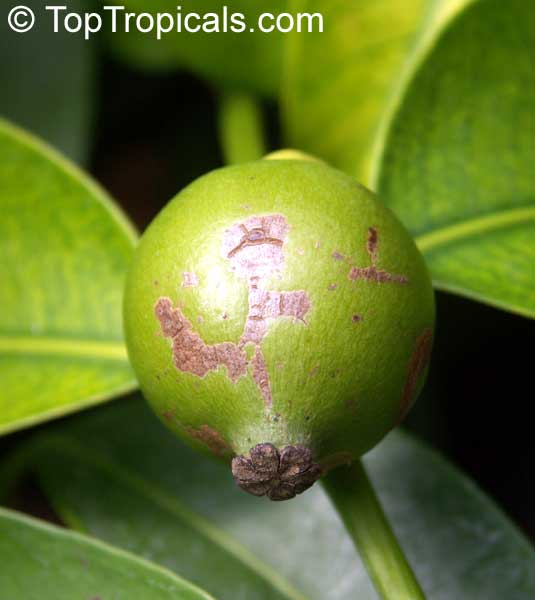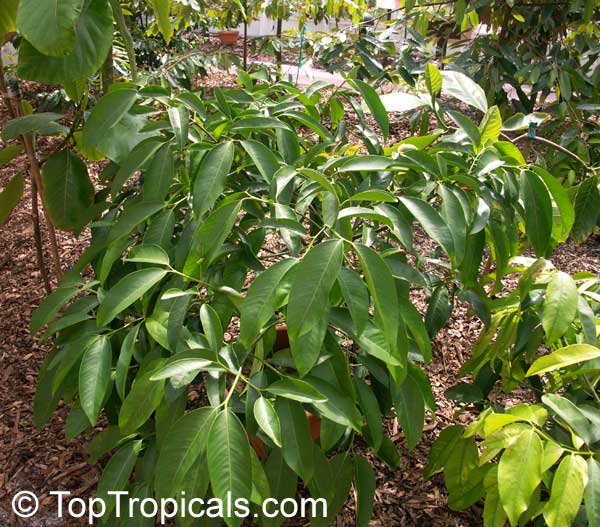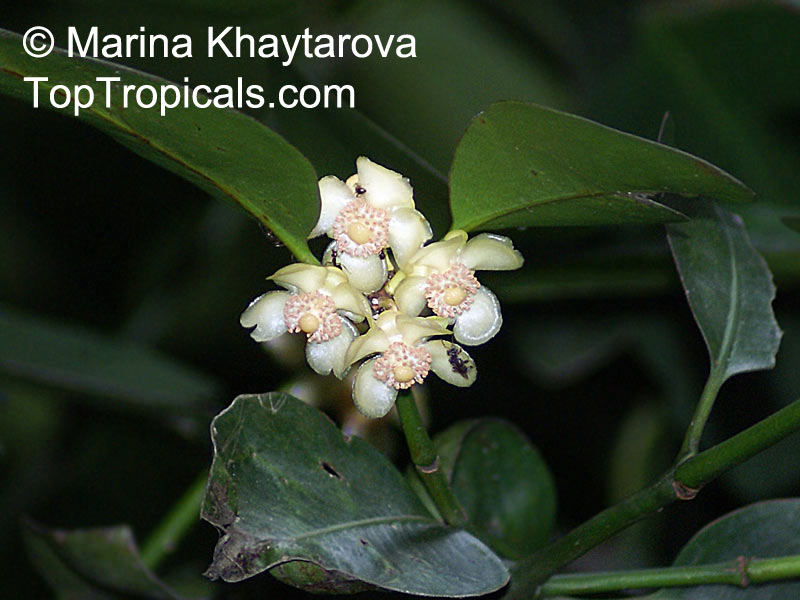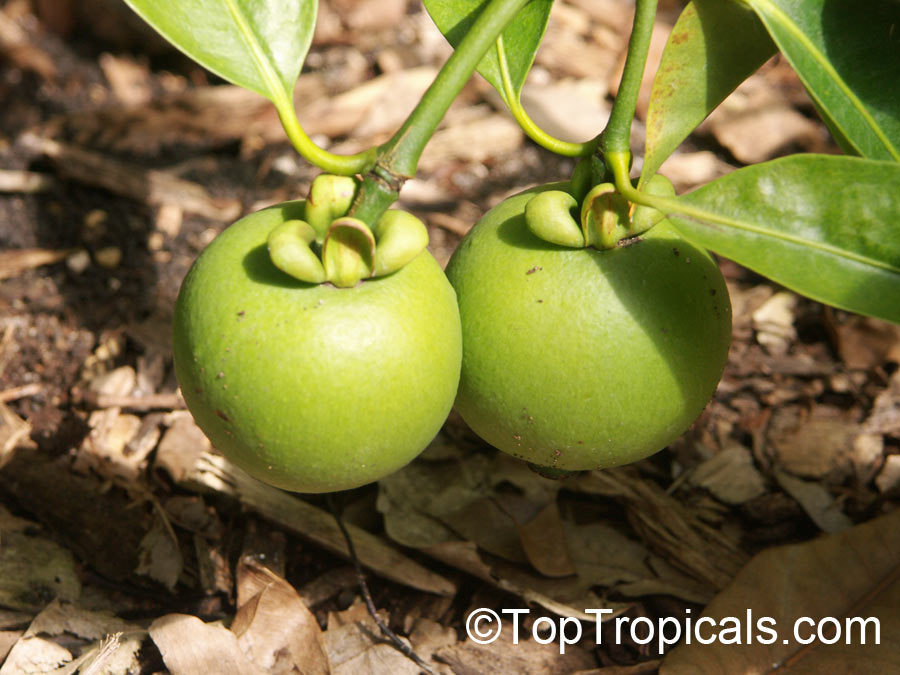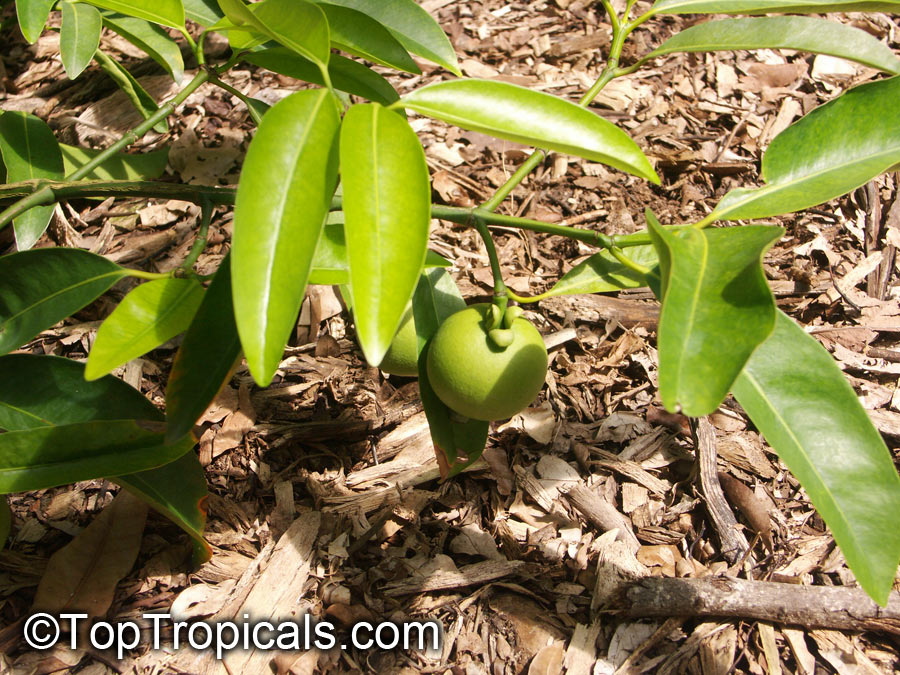Garcinia hombroniana (Seashore Mangosteen)
Top Tropicals Plant Encyclopedia
Botanical name: Garcinia hombroniana
Common names: Seashore Mangosteen, Luli
Family: Clusiaceae / Guttiferae
Origin: Malaysia








Naturally grows near seashores, so it likely salt and sand tolerant. Flowers are whitish, and occur terminally in clusters of 1-3. Trees are dioecious. Seashore mangosteen is propagated by seeds, which germinate in 3-4 weeks. It may be used as a rootstock for mangosteen (Garcinia mangostana - mangosteen grafting). It is very tolerant adverse soil and climatic conditions, being adapted to growing in sandy and rocky soils near the beach in its native habitat. It also grows well in acid clay soils, and tolerates drought as well as high rainfall.
Trees are dioecious. The fruit is smooth, spherical and beaked, with a pinkish red peel. The interior is segmented, like the mangosteen, but the pulp is yellowish, thin and sour, although it has a good flavor. Most segments contain one flat seed. The roots and leaves are used medicinally to relieve itching.
Similar plants: Garcinia hombroniana (Seashore Mangosteen)
- Garcinia atroviridis (Asam Gelugor)
- Garcinia gummi-gutta (Brindleberry)
- Garcinia livingstonei (Imbe)
- Garcinia mangostana (Mangosteen)
- Garcinia megaphylla (Bacuru Pary)
- Garcinia nervosa (Mountain Garcinia)
- Garcinia prainiana (Cherapu)
- Garcinia schomburgkiana (Madan)
- Garcinia sp. (Garcinia)
- Garcinia spicata (Garcinia)
